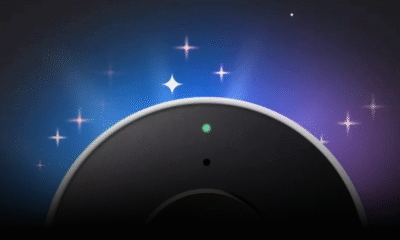Smart Phones
Mark Your Calendars: Google Sets August 20th for Annual Made By Google Event

Aug 20th Made By Google Event
Get ready, Pixel fans! Google has officially announced the date for its highly anticipated annual hardware event: August 20th. The tech giant is promising a showcase of its latest innovations under the “Made By Google” banner, with new iterations of their popular Pixel phones, watches, and earbuds leading the charge. But the tagline “and more” hints that we might be in for a few surprises this year.
For months, rumors have been swirling about the next generation of Pixel devices, and Google’s confirmation finally puts those speculations to rest. While the company remains tight-lipped about the specifics, the August 20th event is shaping up to be a must-watch for anyone invested in the Google ecosystem.
Pixel Phones: The Center of Attention
The star of the show will undoubtedly be the unveiling of the newest Pixel phones. Following Google’s established release cycle, we can likely expect the debut of the Pixel 10 and potentially a larger Pixel 10 Pro. These devices are anticipated to feature the latest generation of Google’s Tensor chip, promising enhanced performance, improved AI capabilities, and advancements in camera technology that Pixel users have come to love. Expect refined designs, potentially with new color options and material choices, as Google continues to push the boundaries of smartphone innovation.
Pixel Watch: Refining the Wearable Experience
Google’s foray into the smartwatch market with the Pixel Watch was met with enthusiasm, and the August event is expected to bring us its successor. The Pixel Watch 2 (or whatever the official name may be) will likely build upon the foundation laid by the first generation, addressing user feedback and incorporating new features. We could see improvements in battery life, enhanced health tracking capabilities, and tighter integration with the broader Pixel ecosystem. With competition heating up in the smartwatch space, Google will be aiming to solidify its position as a serious contender.
Pixel Buds: Elevating Audio with AI
Completing the expected trio of major announcements are the next-generation Pixel Buds. Google’s wireless earbuds have consistently offered a compelling combination of audio quality and smart features, seamlessly integrating with Google Assistant. The upcoming Pixel Buds are expected to continue this trend, potentially introducing advancements in noise cancellation, battery performance, and personalized audio experiences powered by AI. Keep an ear out for potential design tweaks and new color options to complement the new phone and watch releases.
“And More”: What Else Could Google Have in Store?
The intriguing “and more” in Google’s announcement leaves room for exciting possibilities. Could we see updates to the Pixel Tablet, which the user has previously shown interest in? Perhaps new smart home devices are on the horizon, further expanding Google’s ecosystem. Given the user’s past searches related to smart glasses and general tech innovations, there’s even a chance we might get a glimpse into Google’s future ambitions in the realm of augmented reality or other cutting-edge technologies. Only time will tell what surprises Google has up its sleeve.
The Countdown Begins
With August 20th just around the corner, the anticipation for the Made By Google event is already building. Pixel enthusiasts and tech lovers alike are eager to see what innovations Google will unveil. Be sure to mark your calendars and stay tuned for detailed coverage as the date approaches. This year’s event promises to offer a glimpse into the future of Google’s hardware and how it will continue to shape our digital lives.
Smart Phones
Today’s The Day! iPhone 17 Pro Max: First Impression Review
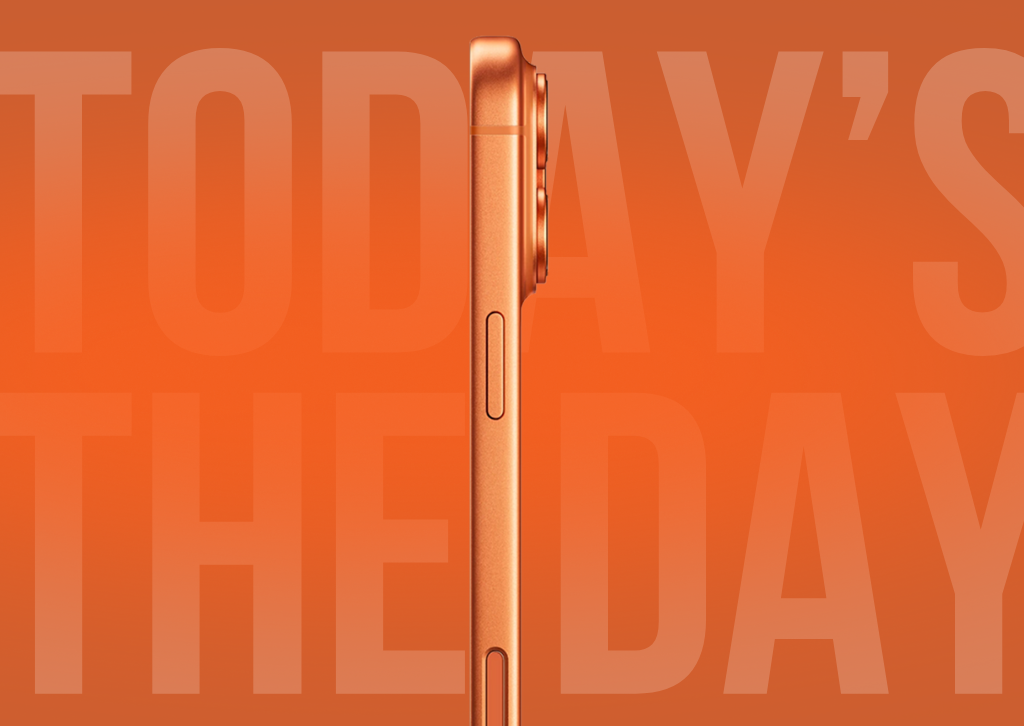
The New iPhone 17 Pro Max
Unboxing Day Excitement
Waking up to that “Today’s the Day” email from Apple never gets old, and a few hours later, my shiny new Cosmic Orange iPhone 17 Pro Max was in my hands. After tearing through the packaging, my first reaction was simple: this thing is pretty darn cool.
Design: A Bold New Direction
Apple has completely reimagined the iPhone 17 Pro Max with a striking new aluminum unibody design that feels remarkably different from previous models. The Cosmic Orange finish is absolutely gorgeous – it’s bold without being overwhelming, and catches light in a way that makes it feel premium and distinctive.
However, I have to echo your sentiment about that glass square on the back. The camera plateau has been redesigned for the first time since the iPhone 11 Pro, featuring a large horizontal camera bump, but the matte finish of this section does clash noticeably with the rest of the phone’s polished aluminum body. It’s a weird design choice that breaks up the otherwise cohesive aesthetic. Apple clearly prioritized functionality over form here, but it’s jarring at first glance.
Build Quality: Surprisingly Light Yet Robust
What’s immediately noticeable is how the vapor chamber technology and aluminum unibody construction make this feel both lighter and more thermally efficient than the previous titanium models. Despite being slightly thicker than the iPhone 16 Pro Max, it actually feels more comfortable in hand. The new Ceramic Shield 2 protection on both front and back provides 3x better scratch resistance, which gives me confidence about daily use.
Display: Bright and Beautiful
The 6.9-inch display supporting up to 3000 nits of brightness is genuinely impressive. Even in bright indoor lighting, the screen looks crisp and vibrant. The colors pop in a way that makes everything from photos to videos feel more immersive. Having ProMotion 120Hz technology means scrolling feels buttery smooth – it’s one of those upgrades you don’t fully appreciate until you go back to a slower refresh rate.
Camera System: The Real Star
The redesigned camera system with its 48MP telephoto lens and 8x optical-quality zoom capability is where this phone really shines. Even in my brief testing, the zoom range feels significantly more versatile than previous iPhones. The new 18MP Center Stage front camera with its unique square sensor for Dual Capture is a clever innovation that automatically adjusts orientation based on your shot composition.
Performance: A19 Pro Powerhouse
The A19 Pro chip with its vapor chamber cooling system delivers the kind of sustained performance that makes everything feel instantaneous. Apps launch without hesitation, and the 12GB of RAM means multitasking is seamless. The improved thermal design should prevent the throttling issues that sometimes plagued previous Pro models during intensive tasks.
Battery Life: All-Day Confidence
Apple claims up to 39 hours of video playback for the Pro Max – potentially the longest battery life ever in an iPhone. While it’s too early for a full battery test, the initial charge has lasted through a full day of heavy setup, data transfer, and camera testing without breaking a sweat.
Early Verdict
The iPhone 17 Pro Max feels like a meaningful evolution rather than a revolutionary leap. The new aluminum unibody design, improved thermal management, and camera upgrades make this a compelling upgrade, especially for anyone coming from an iPhone 15 Pro Max or earlier.
The Good:
- Stunning Cosmic Orange finish
- Excellent build quality and thermal performance
- Impressive display brightness and smoothness
- Versatile camera system with great zoom range
- Outstanding battery life potential
The Not-So-Good:
Despite the design quirk with the camera square, this is shaping up to be Apple’s most capable iPhone yet. The orange finish alone makes it feel special, and the performance improvements are immediately noticeable. If you’re due for an upgrade and want the absolute best iPhone experience, the 17 Pro Max delivers – just be prepared for that camera bump to grow on you over time.

Discover the Best Smartphones Before You Buy! 📱
From in-depth performance breakdowns to real-world user insights, our expert reviews help you cut through the noise and find the perfect phone for your lifestyle. Don’t waste time guessing—read our Smart Phone Reviews now and upgrade with confidence!
Smart Phones
Which iPhone Should I Get? The New iPhone Air or the iPhone 17 Pro Max?
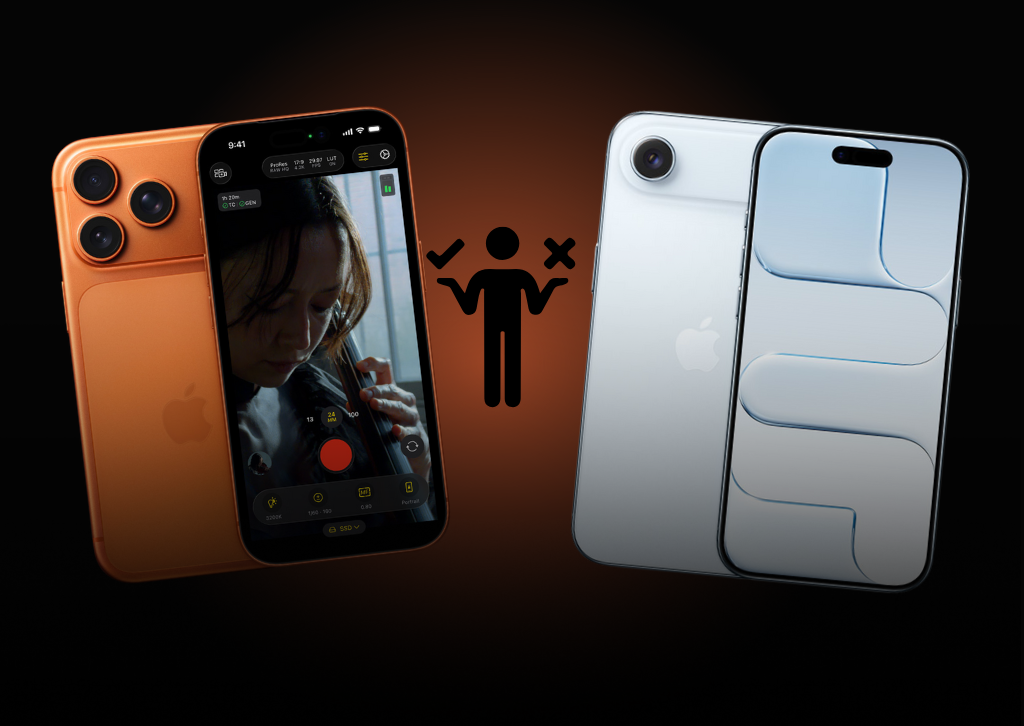
iPhone Air or the iPhone 17 Pro Max?
Apple just shook up the iPhone world with its September 2025 “Awe Dropping” event, introducing a completely new model: the iPhone Air. This ultra-thin device joins the traditional Pro Max flagship, creating an interesting choice between style and power. Here’s everything you need to know to make the right decision.
Bottom Line Up Front
Choose the iPhone Air if: You prioritize portability, style, and having the thinnest iPhone ever made. You’re willing to sacrifice some camera features and battery life for an incredibly sleek design.
Choose the iPhone 17 Pro Max if: You want the most powerful iPhone experience with the best cameras, longest battery life, and premium materials, and don’t mind the extra weight and thickness.
The iPhone Air: Apple’s Thinnest iPhone Ever
Design Revolution
The iPhone Air represents Apple’s most dramatic design shift in years. At just 5.6mm thick, it’s thinner than any iPhone before it – even thinner than the legendary iPhone 6. The polished titanium frame gives it a premium feel while keeping the weight down to just 5.82 ounces (165 grams).
Apple has equipped the Air with Ceramic Shield 2 on both the front and back – the first iPhone to get this protection on both sides. The front offers 3x better scratch resistance, while the back provides 4x better crack resistance.
Display and Performance
Don’t let the thin profile fool you – the iPhone Air packs serious power:
- 6.5-inch Super Retina XDR display with 120Hz ProMotion
- 3,000 nits peak brightness
- A19 Pro chip (same as the Pro models)
- 256GB starting storage
Camera: The Compromise
Here’s where the Air makes its biggest trade-off. It features just one 48MP rear camera housed in a sleek horizontal camera bar. While this single lens can function as multiple focal lengths through computational photography, you lose the dedicated ultrawide and telephoto lenses found on Pro models.
The front camera gets an upgrade to 18MP with Center Stage for better group selfies and video calls.
Pricing
- Starting at $999 for 256GB
- $1,199 for 512GB
- $1,399 for 1TB
Available in four colors: Space Black, Cloud White, Silver, and Gold.
The iPhone 17 Pro Max: Maximum Everything
Built for Power Users
The iPhone 17 Pro Max is Apple’s flagship powerhouse, designed for users who want zero compromises. It features an aluminum unibody design with a built-in vapor chamber cooling system that enables sustained high performance.
Massive Display and Performance
- 6.9-inch Super Retina XDR display – Apple’s largest iPhone screen
- 120Hz ProMotion with the same 3,000 nits brightness
- A19 Pro chip with enhanced cooling for sustained performance
- 12GB RAM for Pro models
- 256GB starting storage
Camera System: Professional Grade
The Pro Max features Apple’s most advanced camera system:
- Three 48MP cameras: Main, Ultrawide, and Telephoto
- 8x optical zoom – the longest in iPhone history
- Macro photography capabilities
- ProRAW and ProRes recording
- 18MP Center Stage front camera
The new horizontal “camera plateau” design houses all three lenses across the width of the phone, giving it a distinctive look.
Battery Life Champion
With room for a larger battery thanks to the new internal design, the Pro Max offers Apple’s best-ever iPhone battery life – up to 4 more hours than the previous generation Pro Max.
Weight and Dimensions
The Pro Max weighs 8.22 ounces (233 grams) and measures 8.75mm thick – significantly heavier and thicker than the Air, but still reasonable for a flagship device.
Pricing
- Starting at $1,199 for 256GB
- $1,399 for 512GB
- $1,599 for 1TB
- $1,999 for 2TB (new option)
Available in three bold colors: Cosmic Orange, Azure Blue, and Platinum White.
Head-to-Head Comparison
Design and Portability
Winner: iPhone Air The Air’s 5.6mm profile and lightweight titanium construction make it incredibly portable. It’s 3mm thinner and nearly 70 grams lighter than the Pro Max. If you want a phone that disappears in your pocket, the Air wins hands down.
Display Size
Winner: iPhone 17 Pro Max While both phones have excellent displays with identical technology, the Pro Max’s 6.9-inch screen provides more real estate for productivity, gaming, and media consumption compared to the Air’s 6.5-inch display.
Camera Capabilities
Winner: iPhone 17 Pro Max This isn’t even close. The Pro Max’s triple camera system with 8x optical zoom, macro capabilities, and professional video features far exceeds the Air’s single-lens setup. If photography is important to you, the Pro Max is the clear choice.
Battery Life
Winner: iPhone 17 Pro Max The Pro Max’s larger size allows for a significantly bigger battery, offering the best battery life in iPhone history. The Air’s thin design necessarily limits battery capacity.
Performance
Draw Both phones use the same A19 Pro chip, though the Pro Max’s vapor chamber cooling allows for better sustained performance under heavy loads.
Value
Winner: iPhone Air At $999 vs $1,199, the Air offers flagship performance at a $200 discount, though you do sacrifice camera versatility and battery life.
Who Should Buy Which?
Buy the iPhone Air if you:
- Value ultra-portable design above all else
- Primarily use your phone for social media, messaging, and basic photography
- Want a premium iPhone experience at a lower price point
- Love being the first to own cutting-edge design technology
- Don’t need extensive camera features
Buy the iPhone 17 Pro Max if you:
- Are a photography enthusiast or content creator
- Need maximum battery life for heavy usage
- Want the largest possible screen for productivity or entertainment
- Frequently use your phone for demanding tasks like gaming or video editing
- Don’t mind carrying a heavier, thicker device for better capabilities
The Verdict
The choice between these two iPhones comes down to your priorities. The iPhone Air is a design statement – it’s the phone you choose when you want the sleekest, most portable iPhone ever made. It’s perfect for users who value style and portability over maximum functionality.
The iPhone 17 Pro Max remains the choice for power users who want the absolute best iPhone experience, regardless of size and weight. Its superior cameras, longer battery life, and sustained performance make it ideal for demanding users.
For most people, the decision will come down to a simple question: Do you prioritize having the coolest, thinnest phone, or do you want the most capable iPhone Apple has ever made? Both are excellent choices – it just depends on what matters most to you.
Pre-orders begin September 12, 2025, with availability starting September 19, 2025.

🔥 Ready to upgrade your phone? Don’t waste time guessing — get the inside scoop on the best smartphone reviews written for real people, not tech jargon. Compare features, performance, and price before you buy.
👉 Read the latest smartphone reviews now on TheTechReview.net
Smart Phones
Introducing the iPhone Air: Apple’s Thinnest, Most Beautiful iPhone Ever
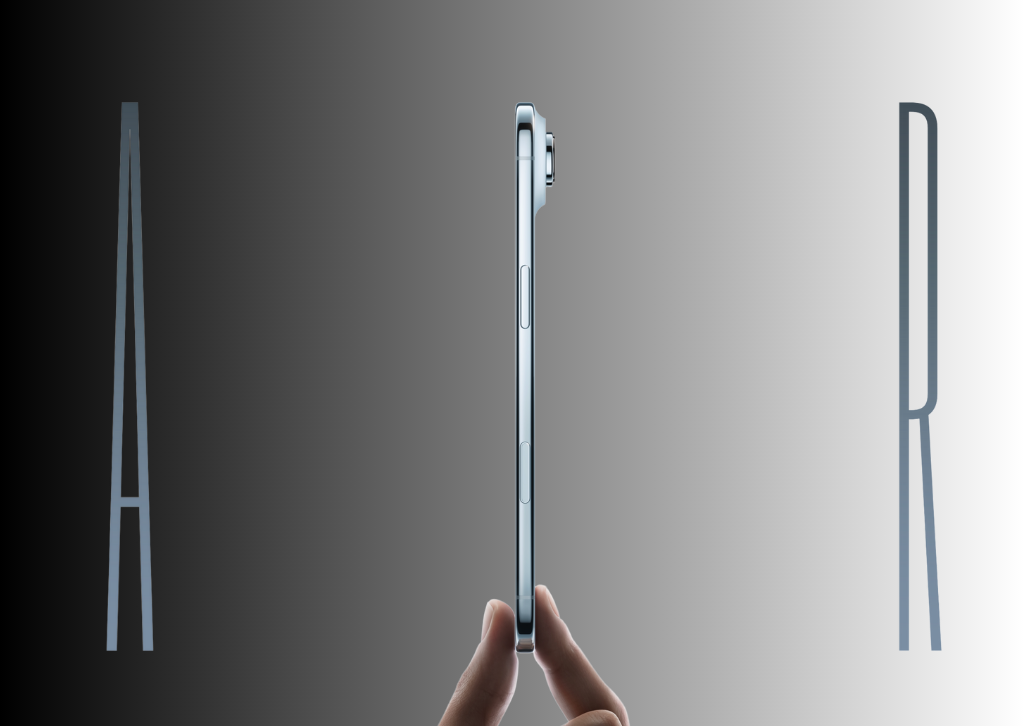
iPhone Air
Apple today unveiled a new member of the iPhone family: the iPhone Air. This striking new device redefines the concept of a premium smartphone, prioritizing an impossibly thin and light design without compromising on power or features.
A Design That Disappears in Your Hand
The iPhone Air is a testament to Apple’s engineering prowess. At just 5.6mm thin and weighing a mere 165 grams, it’s the thinnest and lightest iPhone ever created. This dramatic reduction in form factor, which has earned it the “Air” moniker, is made possible by a complete internal redesign. The device features a grade 5 titanium frame, which is both incredibly strong and made with 80% recycled material. The front and back are protected by an enhanced Ceramic Shield 2, which offers three times better scratch resistance than previous versions. The result is a phone that feels both delicate and remarkably durable.
Power and Efficiency in a Thin Package
The iPhone Air is powered by the new A19 Pro chip. This is a significant move, bringing the same level of performance found in the Pro models to the Air. The A19 Pro chip, with its neural accelerators built into each GPU core, is designed for on-device AI and offers a substantial leap in performance and efficiency. This, combined with a new Apple-designed C1X cellular modem and N1 wireless networking chip, makes the iPhone Air incredibly power-efficient, allowing for all-day battery life despite its thin profile.
A New Take on Photography
The iPhone Air features a redesigned camera system, centered around a powerful 48MP Fusion Main camera. While it may appear to have a single lens, this “Fusion” technology enables the equivalent of multiple lenses, giving users a range of focal lengths to work with. The new 18MP Center Stage front camera is a major upgrade, using a new square sensor and advanced AI to keep everyone in the frame, making it perfect for group selfies and video calls. The iPhone Air also offers 4K 60fps video recording and a 2x Telephoto lens with an updated Photonic Engine for stunning detail in every shot.
A New Display, A New Experience
The iPhone Air sports a gorgeous 6.5-inch Super Retina XDR display with ProMotion technology, offering a silky-smooth 120Hz refresh rate. With a peak brightness of 3,000 nits, the display is exceptionally vibrant and easy to view in any lighting condition. The new display also features an improved anti-reflection coating for better outdoor visibility.
Pricing and Availability
The iPhone Air will replace the “Plus” model in the lineup, sitting above the standard iPhone 17 and below the Pro models. It will be available for pre-order on Friday, September 12, with a starting price of $999. It will be available in four new colors: Space Black, Cloud White, Light Gold, and Sky Blue.

For more great Apple product reviews, you’ve come to the right place
-

 Photography3 months ago
Photography3 months agoSony FE 16mm f/1.8 G Review: The Ultra-Wide Prime for the Modern Creator
-
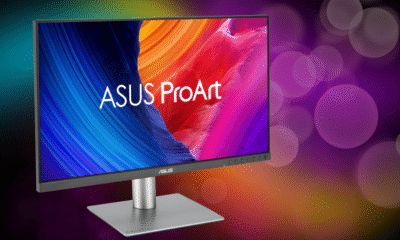
 Computers3 months ago
Computers3 months agoAsus ProArt Display 6K PA32QCV Review: A Visual Feast for Professionals
-

 Tablets5 months ago
Tablets5 months agoClash of the Titans: 13″ iPad Pro M4 vs. Samsung Galaxy Tab S10 Ultra – Which Premium Tablet Reigns Supreme?
-

 Home Tech3 months ago
Home Tech3 months agoThe Guardian of Your Threshold: An In-Depth Review of the Google Nest Doorbell
-

 Computers4 months ago
Computers4 months agoASUS Zenbook Duo: A Pretty Awesome Dual-Screen Laptop
-

 Photography3 months ago
Photography3 months agoAdobe’s “Project Indigo” is the iPhone Camera App We’ve Been Waiting For, and It’s Awesome
-

 Photography3 months ago
Photography3 months agoDJI Osmo 360 go: The Next Generation of Immersive Storytelling?
-

 Health Tech3 months ago
Health Tech3 months agoLumen Metabolism Tracker: A Deep Dive into Your Metabolic Health
-

 Computers3 months ago
Computers3 months agoApple Mac Studio Review: A Desktop Powerhouse Redefined
-

 Home Tech3 months ago
Home Tech3 months agoRevolution R180 Connect Plus Smart Toaster: More Than Just Toast?
-

 Computers3 months ago
Computers3 months agoSamsung 15.6” Galaxy Book5 360 Copilot AI Laptop: A Deep Dive into the Future of Productivity
-

 Photography3 months ago
Photography3 months agoCanon EOS 5D Mark II: A Timeless Workhorse for Discerning Photographers





